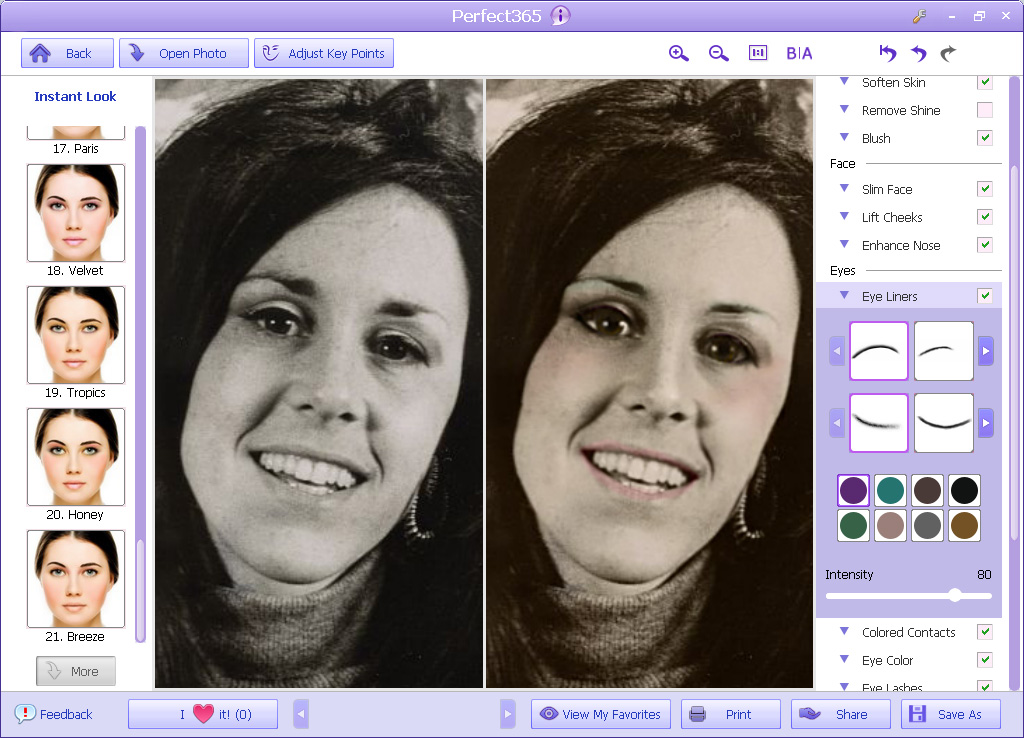
#Perfect365 before and after skin#
As I put away yet another foundation line promising to make my skin look like a living, breathing Instagram filter, I couldn’t stop the thought that maybe the future of makeup isn’t in product-it’s in our iPhones. The app has become synonymous with not only a very specific type of makeup, but also selfies of smooth skin and puppy ears, fuzzed out glittery flowerscapes, and superimposed retro film effects. But I did not plan to take any photos for Instagram that day, so I didn’t care-while I interact with maybe five to 10 people IRL daily, my online face is seen and scrutinized by a couple thousand people whenever I post it to Instagram. My eyelashes, left natural after a brief fling with extensions, were stubby. I had a constellation of three or four clogged pores by the right side of my nose, which I’d been told were due to blocked sinuses. I was bare-faced, as I usually am at work. In a recent ITG pitch meeting, as I played with a new set of eyeshadow palettes strewn across the big table in our beauty closet, I caught a glimpse of myself in a tiny mirror. I shared the photos on the same social media sites I used to discover and celebrate feminism, justifying my digital dishonesty (to only myself-the thought of anyone else knowing about my dysmorphic meddling was mortifying) this way: if magazines set the standard of beauty, and magazines used Photoshop, wasn’t Photoshop the great equalizer?

I adjusted my waistline, the bulges on my arms where triceps should have been, pulled my right iris down to make that eye look less squinty. Each yearbook editor was given access to Photoshop to tweak images before they were plopped onto pages-but once I had it, no photo was off limits.

There are, I imagine, two types of teens who join their high school’s yearbook committee: shameless empaths who use yearbook to make cross-clique friendships, and type-A introverts who want to control every photo of themselves published and distributed amongst their classmates.


 0 kommentar(er)
0 kommentar(er)
